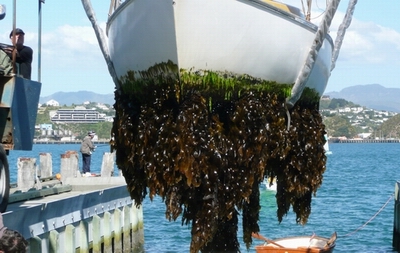We would love to tell you that this image is part of the Pirates of the Caribbean set, but it’s not. It’s the hull of a boat covered in marine fouling. This can be prevented with antifouling systems and coatings.
Marine fouling creates a lot of issues for anything in the water. With regards to seafaring vessels, fouling can be extremely costly.
Here’s what you need to know about Marine Fouling
- There are 2 types of fouling
- Microfouling is the first stage. (sometimes called slime). This level of fouling includes growth from unicellular algae and bacteria
- Macrofouling is the second stage (where the real issues begins). This level of fouling includes plant and animal growth.
- There are over 4,000 fouling species known to colonize submerged surfaces
- Vessels in tropical zones have the highest risk of fouling. In tropical zones unlike temperate zones, do not have any seasonality to the severity of fouling. It’s year round!
- Boats at highest risk are
- Boats in coastal waters
- Boats that are stationary 50% or more of the their time on the water
- Bigger slower moving vessels- even faster moving vessels are at risk if the port time is extended.
- A rough fouled hull can increase fuel consumption up to 40%
For recreational as well as commercial vessels marine or biofouling is a costly cyclic event. There is almost no way to avoid fouling. Even with the best anti-fouling coatings on your hull, you will still have to have periodic divers on the boat as well, although less frequent, haul outs and repainting.
With an ultrasonic antifouling system, you can significantly reduce the intervals between your haul outs and almost negate paying divers to clean your hull.
Ultrasonic technology isn’t anything new, it’s just being applied in new ways. For more information about ultrasonic antifouling systems, contact J-TEK Solutions.

